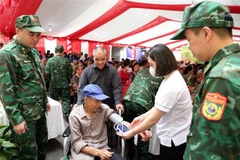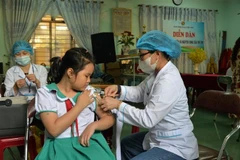Thisyear, all TB patients are expected to have access to standard treatmentmethods and receive sufficient and high-quality medicine, Director ofthe National Lung Hospital and Head of the NTP Nguyen Viet Nhungsaid in an interview granted to the Vietnam News Agency.
The programme also strives to control the rate of multidrug-resistantTB patients to fewer than 5 percent of the total newly-detected cases,while increasing the application of modern diagnosis and treatmenttechnology and improving the qualifications of health workers, he said.
In 2014, the national campaign was carried out nationwide, discovering over 102,000 TB sufferers.
The TB prevention network was developed in 36 underprivilegeddistricts of nine provinces, Quang Binh, Ha Tinh, Hoa Binh, Bac Giang,Nam Dinh, Nghe An, Quang Nam, Quang Ngai and Gia Lai.
Currently, 44 out of the 63 cities and provinces across the country have established tuberculosis and lung hospitals.
The Vietnamese Government also approved the TB prevention strategy through 2020, Nhung said.
As a result, 29 cities and provinces created steering committees forimplementing the national TB strategy in January 2015.
The Global Fund also pledged an aid package of 42 million USD for thenational TB prevention strategy between 2015 and 2017.
The broadened application of the GeneXpert technology has helpedVietnam to become one of the five countries around the world tosuccessfully treat over 70 percent of the multidrug-resistant TBpatients.
The Government and the Ministry of Healthprovided 75 billion VND (3.5 million USD) to ensure TB medicine supplyin 2014. The World Health Organisation (WHO) will support this withmedicine, including the US trial drugs Bedaquiline and JapaneseDelamanid which have shown initial effective results in comparison withthe current standard treatment methods.
According tothe WHO, tuberculosis is the second leading infectious cause of deathwhile multidrug-resistant TB is present in almost all countries aroundthe world.-VNA
























